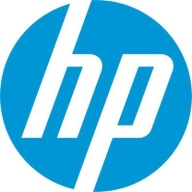

IBM Security QRadar and HP Wolf Security compete in the cybersecurity category. HP Wolf Security has a slight edge due to its feature set, while IBM Security QRadar is preferred for pricing and support.
Features: IBM Security QRadar provides advanced threat intelligence, anomaly detection, and deep analytics, excelling in security information and event management. HP Wolf Security focuses on endpoint security with hardware-enforced protection, offering robust malware protection and application isolation.
Room for Improvement: IBM Security QRadar could enhance user-friendliness and reduce deployment complexity. Expanded integration with other systems would also be beneficial. HP Wolf Security could improve its scalability for larger environments, offer more advanced analytics, and enhance its threat intelligence capabilities.
Ease of Deployment and Customer Service: IBM Security QRadar provides a complex deployment process with comprehensive customer support, while HP Wolf Security is simpler to deploy, thanks to its user-friendly configuration and responsive support team.
Pricing and ROI: IBM Security QRadar is cost-effective for large organizations requiring extensive security analytics, offering optimal ROI for large-scale implementations. HP Wolf Security is a more affordable option for smaller setups, providing a fast return on investment due to its efficient endpoint protection.
| Product | Market Share (%) |
|---|---|
| IBM Security QRadar | 1.4% |
| HP Wolf Security | 2.7% |
| Other | 95.9% |

| Company Size | Count |
|---|---|
| Small Business | 3 |
| Large Enterprise | 5 |
| Company Size | Count |
|---|---|
| Small Business | 90 |
| Midsize Enterprise | 36 |
| Large Enterprise | 102 |
HP Wolf Security is a comprehensive cybersecurity solution that bolsters your organization's cyber-resilience on multiple fronts. With its full-stack security approach, it ensures layered protection from hardware to the cloud, providing a robust defense against cyber threats. HP Wolf Security introduces endpoint isolation, a cutting-edge feature that effectively halts threats that may go unnoticed by Next-Generation Antivirus (NGAV) and Endpoint Detection and Response (EDR) systems. Moreover, it extends its security coverage to printers, equipping them with advanced detection and self-healing capabilities to further safeguard your digital ecosystem. This integrated solution streamlines IT and security risk management, resulting in fewer alerts and false positives, and reduces the time and effort required for endpoint incident analysis and remediation. Notably, HP Wolf Security prioritizes productivity, allowing you to manage risk without disrupting the user experience, enabling worry-free work from anywhere, and offering rapid IT disaster recovery at scale.
IBM Security QRadar (recently acquired by Palo Alto Networks) is a security and analytics platform designed to defend against threats and scale security operations. This is done through integrated visibility, investigation, detection, and response. QRadar empowers security groups with actionable insights into high-priority threats by providing visibility into enterprise security data. Through centralized visibility, security teams and analysts can determine their security stance, which areas pose a potential threat, and which areas are critical. This will help streamline workflows by eliminating the need to pivot between tools.
IBM Security QRadar is built to address a wide range of security issues and can be easily scaled with minimal customization effort required. As data is ingested, QRadar administers automated, real-time security intelligence to swiftly and precisely discover and prioritize threats. The platform will issue alerts with actionable, rich context into developing threats. Security teams and analysts can then rapidly respond to minimize the attackers' strike. The solution will provide a complete view of activity in both cloud-based and on-premise environments as a large amount of data is ingested throughout the enterprise. Additionally, QRadar’s anomaly detection intelligence enables security teams to identify any user behavior changes that could be indicators of potential threats.
IBM QRadar Log Manager
To better help organizations protect themselves against potential security threats, attacks, and breaches, IBM QRadar Log Manager gathers, analyzes, preserves, and reports on security log events using QRadar Sense Analytics. All operating systems and applications, servers, devices, and applications are converted into searchable and actionable intelligent data. QRadar Log Manager then helps organizations meet compliance reporting and monitoring requirements, which can be further upgraded to QRadar SIEM for a more superior level of threat protection.
Some of QRadar Log Manager’s key features include:
Reviews from Real Users
IBM Security QRadar is a solution of choice among users because it provides a complete solution for security teams by integrating network analysis, log management, user behavior analytics, threat intelligence, and AI-powered investigations into a single solution. Users particularly like having a single window into their network and its ability to be used for larger enterprises.
Simon T., a cyber security services operations manager at an aerospace/defense firm, notes, "The most valuable thing about QRadar is that you have a single window into your network, SIEM, network flows, and risk management of your assets. If you use Splunk, for instance, then you still need a full packet capture solution, whereas the full packet capture solution is integrated within QRadar. Its application ecosystem makes it very powerful in terms of doing analysis."
A management executive at a security firm says, "What we like about QRadar and the models that IBM has, is it can go from a small-to-medium enterprise to a larger organization, and it gives you the same value."
We monitor all Endpoint Detection and Response (EDR) reviews to prevent fraudulent reviews and keep review quality high. We do not post reviews by company employees or direct competitors. We validate each review for authenticity via cross-reference with LinkedIn, and personal follow-up with the reviewer when necessary.